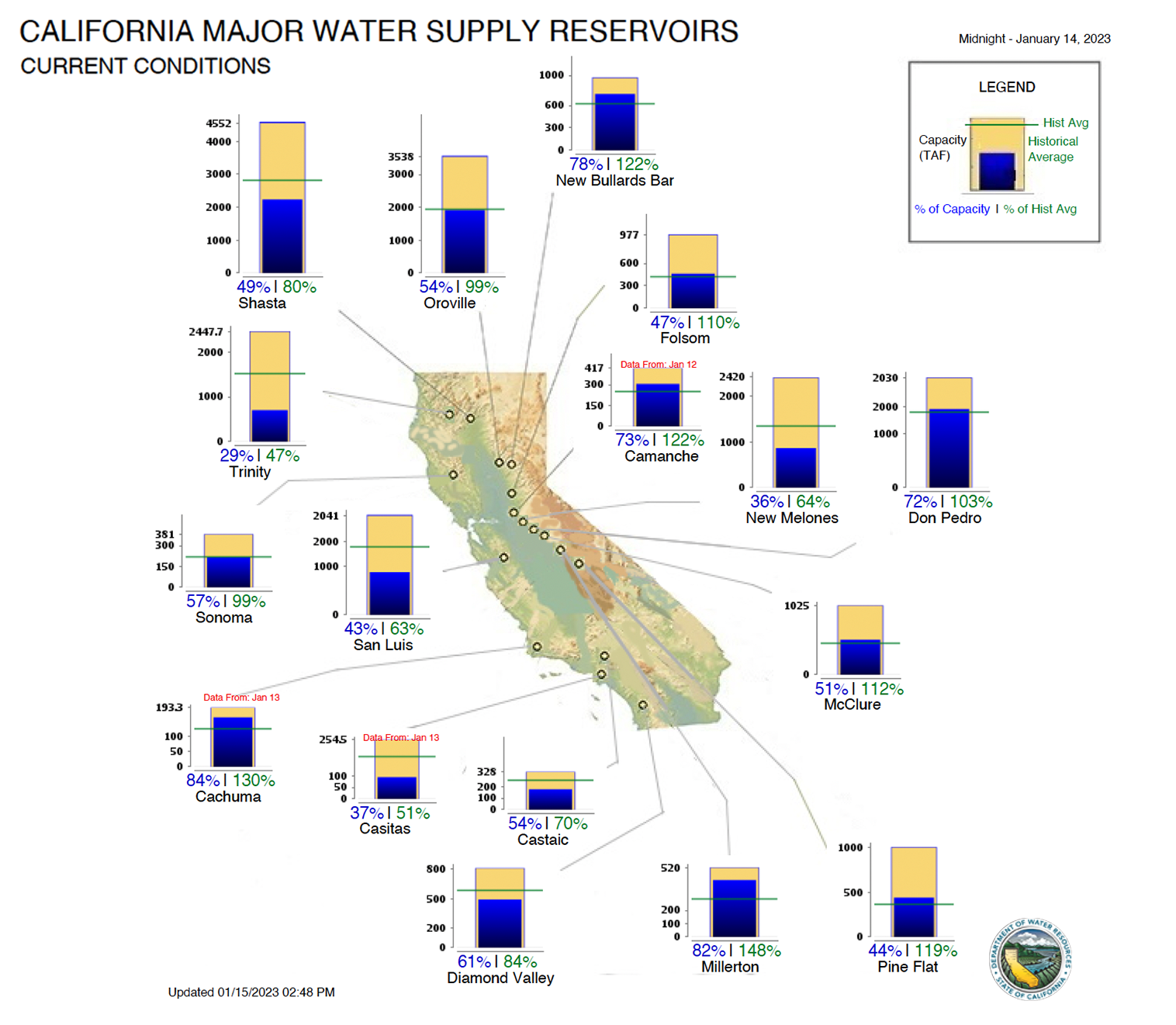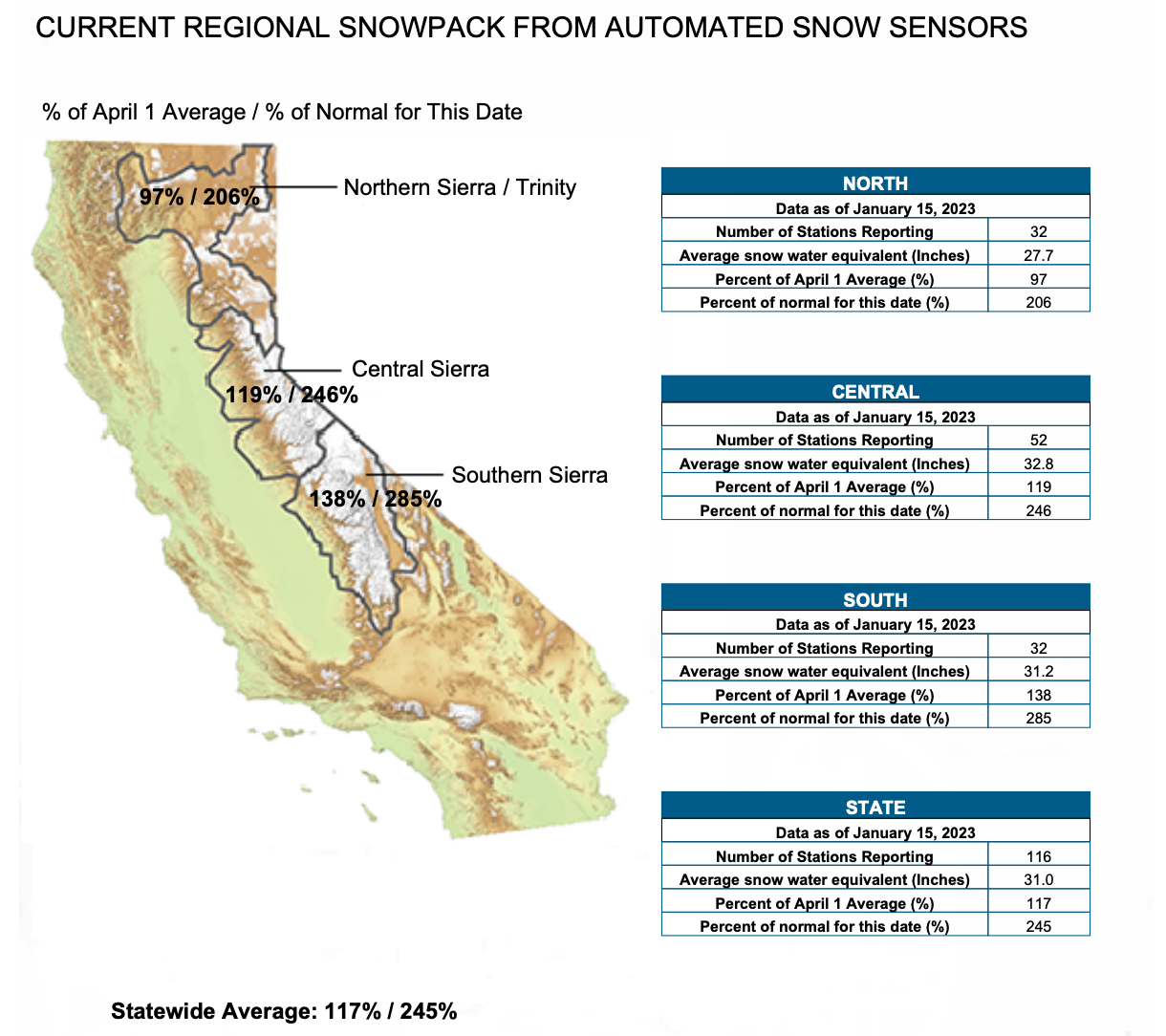After three years of drought, this winter’s unforgettable rains have replenished at least some of the state’s water storage, KRON4 reported.
After consecutive years of droughts, many of the state’s reservoirs had dipped to drought emergency levels. California always receives the vast majority of its precipitation between November and March, but recent years hadn’t received much precipitation to refill them (a more and more common occurrence as climate change accelerates).
Read more: Once Again, Lake Oroville and Other Reservoirs Are at Drought Emergency Levels [SFist]
But if you haven’t looked outside in the past month, this year has been different. Weeks of “atmospheric rivers,” “bomb cyclones,” and a “Pineapple Express” have given us the wettest winter in recent memory — thought it’s not without floods, landslides, downed trees, and felled power lines.
California’s complex water system has ways to try to capture this excess precipitation, and they’ve proven relatively successful, according to reports. KRON4 found that while none of the major reservoirs are fully at capacity – most are still less than 50% full – many are at or beating their historical averages for this point in the year.
The California Department of Water Resources has some graphics to show these levels:

The Chronicle reported that 9 of the 15 of the state’s major water supply reservoirs currently have daily water storage levels that are equivalent to that of their historical averages (from 1991 to 2020). These reservoirs include Sonoma, Pine Flat, New Bullards Bar, Millerton, Camanche, Oroville, Don Pedro, McClure, and Folsom — and even Shasta is getting close.
For example, Folsom, in the Sierra Nevada foothills, is at 110% of its historical average for this time of year, but 47% of total capacity. Butte County’s Oroville stands at a level 99% of where it usually is in mid-January (although that is about 55% total capacity).
Snowpack, meanwhile, is extremely high this year. (Seen any pictures of Tahoe lately?) CDWR says that it’s 117% of usual.

Also, while it’s too early to fully tell, all of this water could potentially help California out of its drought.

We're not out of the water yet, but early signs show that this water could make a dent in our years-long water debt.
Image via Unsplash/Manny Becerra.

